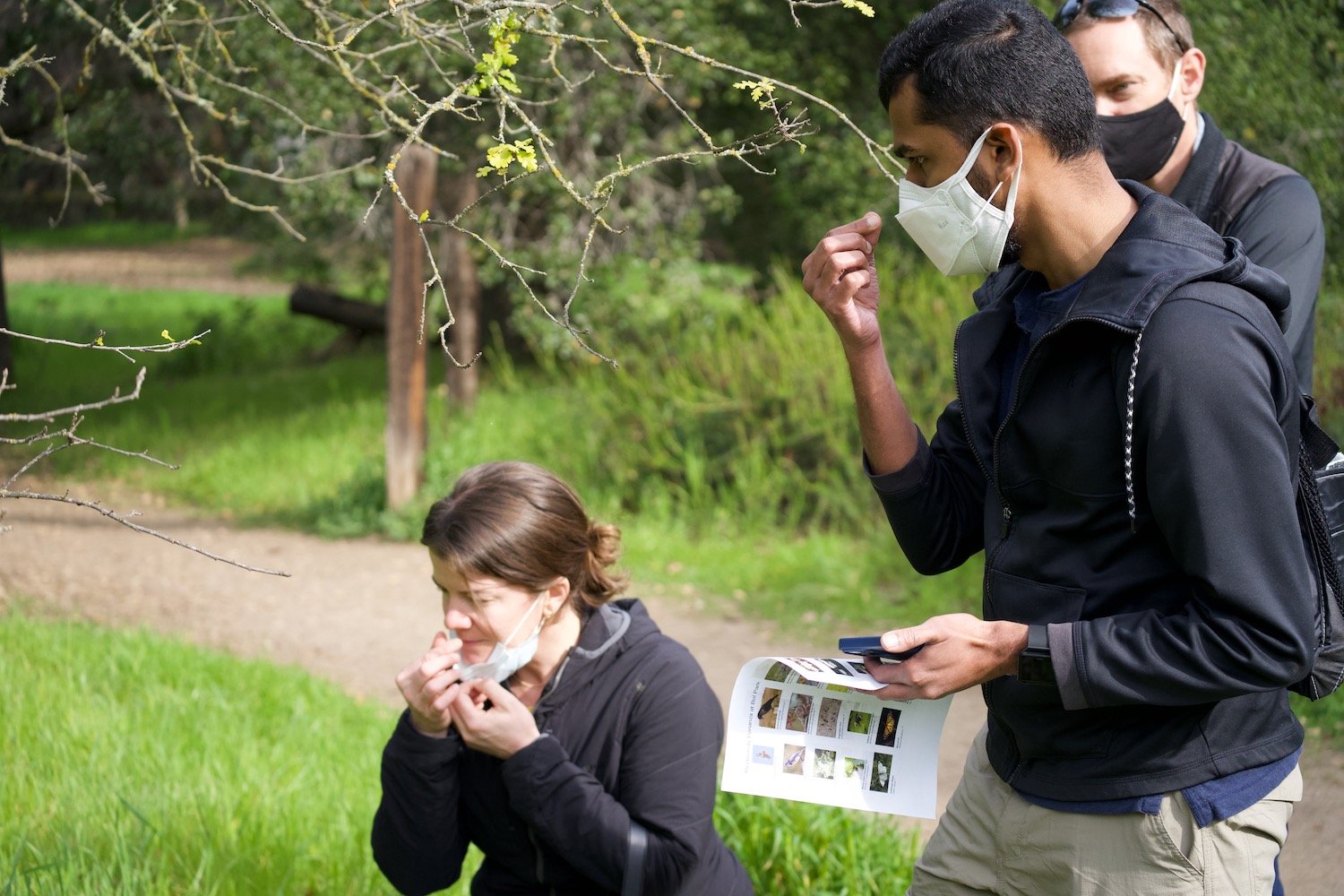Discovering the Hidden Ecosystems of Palo Alto
Any nature enthusiast knows that if you’re hoping to spot wildlife, a great place to start is near plants.
This rule of thumb is true whether you’re at a park, walking around your neighborhood, or in the city. A tall office building might be the perfect spot for a hawk to keep its eye out for prey in the grass below, and the trees and plants of ordinary neighborhood parks can provide habitat for hundreds of different species of birds, mammals, and insects.
With its varied plant life and natural features, Bol Park in Palo Alto made an ideal spot for our most recent BioBlitz, a community-based effort to observe and record as many organisms as possible (“bio”) at a specific location over a specific timeframe (“-blitz”). Bol Park’s abundant vegetation includes a native plant garden cared for by the Barron Park Association Native Habitat Committee and Grassroots Ecology, riparian habitat along a stretch of Matadero Creek that runs through the park, and lots of native tree canopy.
Last month over 30 community members joined us at Bol Park for the Bioblitz. Together we took pictures of all the different species we could find and documented them using the iNaturalist app. Many of our BioBlitz participants had never been to an event like this before, but they were ready, maps and phones in hand, to explore the park.
In just a few hours, the group observed 147 unique species, from slender salamanders slithering under rocks, to three spined stickleback fish in the creek, to toyons covered in red berries and buckeye trees just starting to leaf out their bright green fleur de lis. You can view these and all of the other species that were observed on iNaturalist.
These observations from just two hours of exploration show how much biodiversity there is to be found within a developed suburban community, even if not obvious at first glance.
We’ll have more opportunities to explore at a BioBlitz later this spring. Join us in April and May for the City Nature Challenge, an annual worldwide effort to document biodiversity! Stay tuned for more information on how to participate by signing up for our email list.
By Emily Repech, Communications and Development Associate






